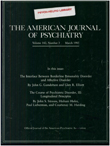Tardive Dyskinesia in Patients Treated with Major Neuroleptics: A Review of the Literature
Abstract
Since 1959 a growing number of reports have described a new type of neurological disorder in mental patients. This disorder, known as tardive dyskinesia, has been observed in approximately 500 cases but, judging from the accurate observations made by three separate groups of investigators, the syndrome is likely to be more frequent than one may suspect. Although manifestations of tardive dyskinesia occur in a number of diseases of the central nervous system, there is considerable evidence that the largescale use of phenothiazines or similar drugs in recent years is responsible for the great number of patients in mental hospitals exhibiting myoclonia and choreo-athetoid symptoms.
Access content
To read the fulltext, please use one of the options below to sign in or purchase access.- Personal login
- Institutional Login
- Sign in via OpenAthens
- Register for access
-
Please login/register if you wish to pair your device and check access availability.
Not a subscriber?
PsychiatryOnline subscription options offer access to the DSM-5 library, books, journals, CME, and patient resources. This all-in-one virtual library provides psychiatrists and mental health professionals with key resources for diagnosis, treatment, research, and professional development.
Need more help? PsychiatryOnline Customer Service may be reached by emailing [email protected] or by calling 800-368-5777 (in the U.S.) or 703-907-7322 (outside the U.S.).



